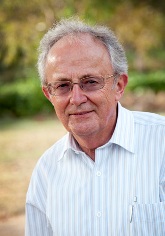simon says...
.jpg)
In only a few days the seven year journey that has been CRCNPB will morph into the PBCRC and start the next term. It is a time to reflect on the significant achievements over the seven years as well as consider the many things we can still achieve in the future.
In seven years we have gone from a centre with a Board, a CEO, a science committee and a rented office, without any furniture, to a globally recognised research centre that has been successful in achieving a second term. We have created a strong research network that not only covers Australia, but also numerous other countries. The PBCRC illustrates our strong international network with several participants outside Australia. Biosecurity is a global issue and the problems we face in Australia are no different to other countries and it is only logical that we collaborate beyond our shores.
Our research efforts have been very diverse and have resulted in a large number of publications that include papers in high impact factor journals. It has been positive to see the strong desire of researchers to publish their work in peer reviewed journals and we will continue to strongly encourage this. The other objective of successful research in a CRC is to produce a deliverable that is of value to our end-users and will be readily adopted. Successful delivery and adoption is often cited as requiring 10 years from completion of research activities but it has been positive to see that many CRCNPB project deliverables are already being readily adopted into the Australian biosecurity system. While we have been successful over the past seven years this is an area where we can continue to improve and the research team will work actively with all researchers to ensure we maximise delivery and adoption potential for all project deliverables. I thank the efforts of Dr James Ridsdill-Smith, Principal Scientist, Dr David Eagling, Research leader, and all the Program Leaders who contributed to make the current CRC a success.
Alongside the research activities of the CRC has been a very successful education and training program led by Dr Kirsty Bayliss. We are still on track to complete at least 32 PhDs in the CRC with the last theses to be submitted before 31 December this year. The standard of theses submitted has been high and a positive outcome is the high proportion of completed candidates that are now employed in the biosecurity field. Kirsty will continue this role with PBCRC and I am sure we will continue to attract the same high calibre of students. The program has also contributed to many training activities and the CRC was the largest investor in the development of the Plant Biosecurity curriculum that is delivered by university members of the CRC.
A few weeks ago we completed the last Science Exchange for CRCNPB. As usual this was an event that showcased the success of the CRC as well as providing an opportunity for researcher and end-user engagement. The CRC has already commenced the planning for the next like-event which we hope will be even more popular than those held to date.
The Commonwealth Agreement has been executed and in the coming weeks all signatures for the Participants Agreement will have been received allowing it to be executed and the CRC to be formally underway. It is important that we focus on the key objectives of the centre; 1) to be a cooperative research centre (collaboration between researchers from different organisations is the key), and 2) that all research is end-user driven (we do not want to undertake research that simply ends up on the shelf collecting dust). The CRC is the melding of 26 participants that are working collectively to improve plant biosecurity. The inclusion of our new participants from NZ, USA, Indonesia and the UK – along with our collaborative agreements with China – will provide the focus on plant biosecurity at a global level.
So many people have contributed to the success of the CRC to date, with far too many to name individually. However, I would like to thank the Board, the CRC staff, the Science Committee, participant representatives and all researchers and students who have made the trip an enjoyable ride so far. Let’s maintain the strong teamwork and deliver even better outcomes over the next six years.

Dr Simon McKirdy
Chief Executive Officer |
in this issue...

From the arm of the chair
Professor John Lovett gets a touch nostalgic in his final Leaflet copy for the CRCNPB.
SX celebrates seven successful year
In late May the CRCNPB had its final Science Exchange, with over 180 delegates in attendance. Find out more here.
Awards highlight outstanding research
A number of researchers were recognised at the Science Exchange Awards Dinner for their outstanding contribution to plant biosecurity. Find out who won the awards here.
PBCRC to launch new website
The PBCRC is about to launch a new website. Find out how to access the PBCRC website here.
Chinese collaboration builds for PBCRC
The CRC’s collaboration with China continues to grow. Learn about the latest developments.
CRC news updates
If you haven’t already heard, the PBCRC has started a new update service called The Bud. Sign up here.
other news...
A number of events will be held soon which relate to the PBCRC. Find out what’s coming up here.
Matthew Tan has submitted his PhD thesis for examination. Find out which student is about to follow suit in the Education and Training update.
Want to know more about Cooperative Research Centres in general? Sign up to the CRC Association newsletter here. |


.jpg)


